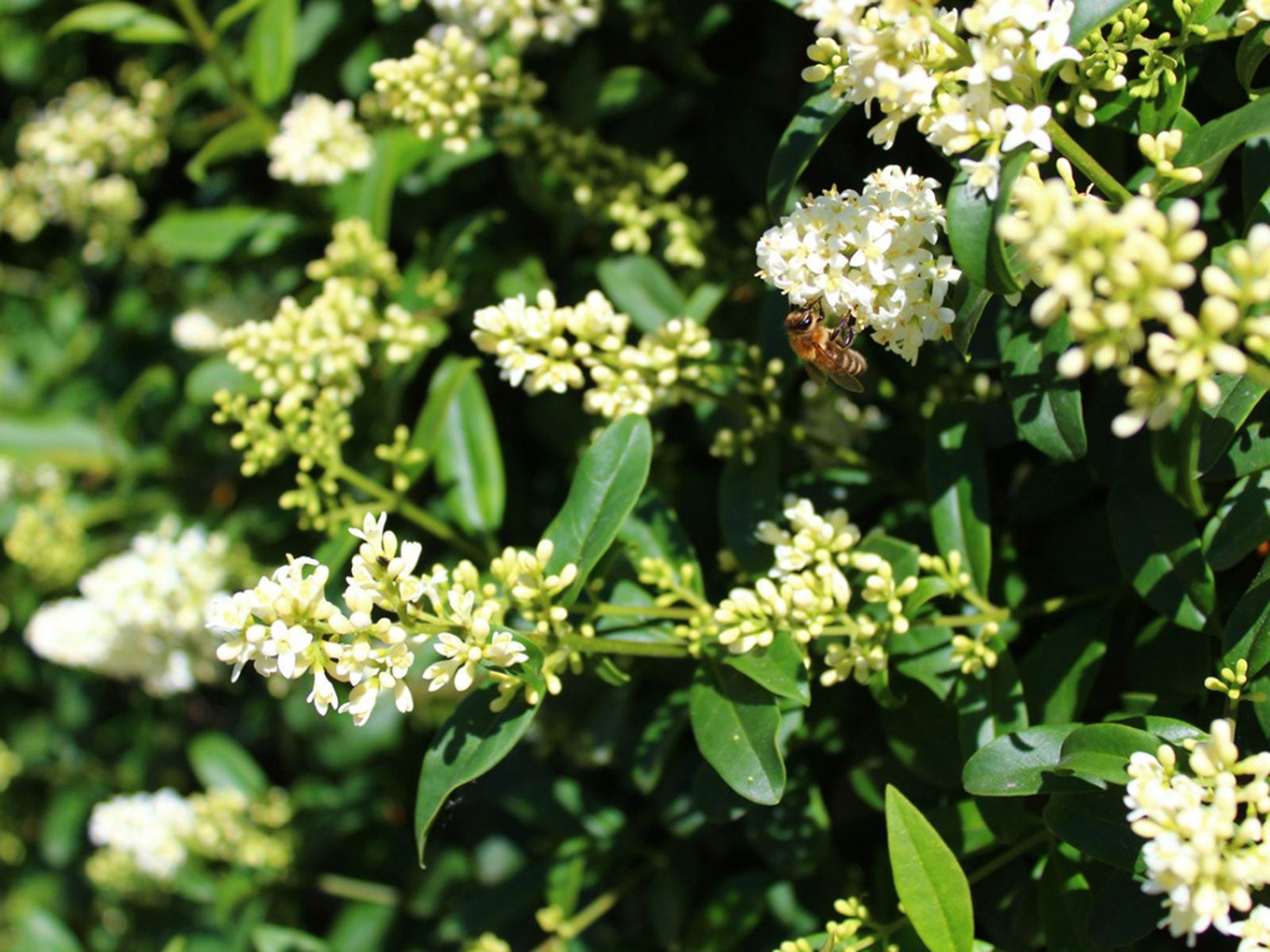Grow Common Privet: Best Care For Invasive Ligustrum Vulgare


Quick Common Privet Facts:
- Botanical name: Ligustrum vulgare
- Height: 10 to 15 feet (3-4.57m)
- Spread: 8 to 15 feet (2-4.57m)
- Sun exposure: Full direct sun to partial shade
- Soil requirements: Average well-draining soil
- Hardiness zones: USDA 4-7
- When to plant: Spring or fall
Deciding to grow common privet (Ligustrum vulgare) is an easy choice if you need an easygoing standalone shrub or plant for hedging. Indeed, the common privet (also called European privet or wild privet) has long been a popular hedge plant. If you're looking for the fastest growing shrubs, this one is really fast. It grows as wide as it is tall, and it is also fairly cold-hardy.
Ligustrum vulgare is easy to grow, but it has a bit of a reputation for taking over. In certain places, it is described as invasive. Fortunately, there are ways to keep it in check, so you can be sure of the most well-maintained shrubs and hedges.
How to Grow Common Privet
Although it's one of the least ornamental Ligustrum shrubs you can grow, common privet is excellent for hedging. It is a vigorous, medium-sized shrub with shiny, lance-shaped green leaves. These are 1-2 inches (2.5-5 cm) long and have a coarse texture. Common privet hedges are often used on property boundary lines.
Common privet is a deciduous shrub in certain areas and a broad-leaf evergreen shrub in others, depending on hardiness zone. Although the leaves turn purple in autumn, this is not an ornamental feature. Still, Ligustrum vulgare flowers impressively in June. The panicles of white, airy blooms are extremely fragrant. These flowers evolve into black drupe-type fruits which mature in September. These berries are the privet's most ornamental feature. They also serve as food for wild birds.
Best Care for Better Hedges and Shrubs
Common privet is extremely low-maintenance, whether in shrub form or as a privet hedge. It is tolerant of almost all cultural care requirements. Just a few essentials will ensure you get the best from these easygoing types of hedging and shrub specimens.
The Right Light
Grow common privet either in direct sunlight or in partial shade. It is extremely tolerant when it comes to different exposures, but it prefers good amounts of sunshine.
Water & Feeding
European privet is drought tolerant. It does not require very much water and prefers medium to dry soil. Growing as a boundary or hedging shrub, it won't require much ongoing attention.
Sign up for the Gardening Know How newsletter today and receive a free copy of our e-book "How to Grow Delicious Tomatoes".
Soil & Compost
Common privet is tolerant of a range of soil types. It can thrive in sandy soil, loam or even heavy clay. It also accepts low, neutral and even high pH soil, and grows in acidic and alkaline soils.
When to Tackle Invasive Privet
When you grow common privet, bear in mind that it is considered invasive in certain states. Indeed, the nickname 'invasive privet' is often used. It can escape its place in home landscapes and has naturalized in the wild. Wild birds which eat the berries also contribute to spreading it far and wide.
The fact that it is so tolerant when it comes to sunshine, soil and drought means that it can easily flourish in many places. This is part of the reason common privet has been able to colonize disturbed areas, forests and grasslands. Regular maintenance is the best way to prevent these shrubs from taking over.
How to Keep Common Privet under Control
This shrub does accept a severe pruning. However, although you can prune privet hedges, this won't always be enough. Common privet is a suckering shrub and grows into dense stands. If you need to prevent its spread, you will also need to control this shrub at the root level. Remove suckers as soon as you see them, wherever you wish to keep the plant in check.
Removing a common privet hedge completely is not an easy thing to do. The best way to attempt this is to dig out the shrubs by the roots.
Frequently Asked Questions
Are Common Privet Berries Poisonous?
Although the berries produced by these shrubs are edible to birdlife, they are toxic to dogs and cats. The berries are also poisonous to humans.

Teo Spengler is a master gardener and a docent at the San Francisco Botanical Garden, where she hosts public tours. She has studied horticulture and written about nature, trees, plants, and gardening for more than two decades, following a career as an attorney and legal writer. Her extended family includes some 30 houseplants and hundreds of outdoor plants, including 250 trees, which are her main passion. Spengler currently splits her life between San Francisco and the French Basque Country, though she was raised in Alaska, giving her experience of gardening in a range of climates.